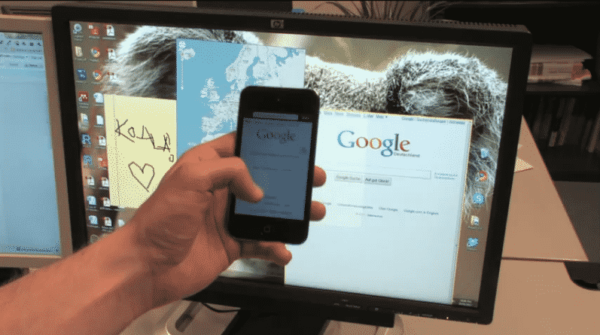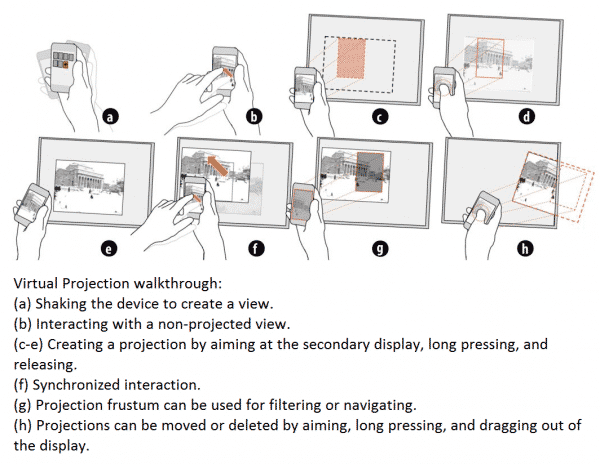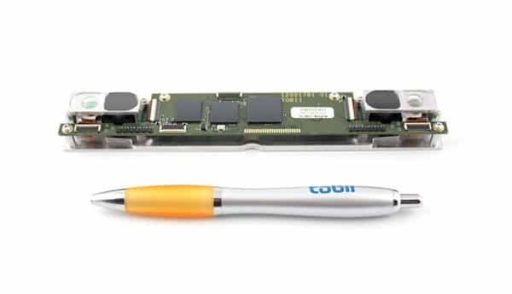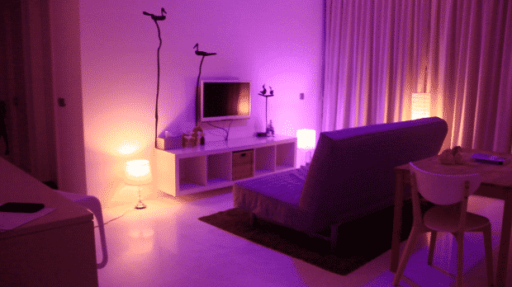Three People Dominikus Baur, Sebastian Boring, and Steven Feiner, a collaborative team from the University of Calgary, University of Munich, and Columbia University, have found a way to use a smartphone to project the phone’s display on to external close displays. The team is working on its technology. Through Virtual Projection, as ‘borrowing available display space in the environment’, you can write or can display something on the wall. Dominikus, Sebastian and Feiner are continuously working on behind Virtual Projection. Seems, every iPhone user will walk around with a mini projector soon.
Making the iPhone or Smartphone into a Virtual Projector is quite simple. The phone user holds the phone before a desired computer screen. The phone’s camera will capture and compare images from the screen to work out location. In fact, the whole system relies on tracking where the phone is being pointed and passes information back to the computer screen. No doubt, for passing information back, WiFi technology will be used. Through WiFi, the reversed information can be displayed as projection on the screen. Multiple users can place images on the same screen, when the users want the images to work together.
According to Dominikus, Sebastian and Feiner of their technique, “Virtual Projection is based on tracking a handheld device without an optical projector and allows selecting a target display on which to position, scale, and orient an item in a single gesture.” To be noted that, Feiner is a Professor of Computer Science at Columbia University. He directs the Computer Graphics and User Interfaces Lab.
Dominikus said, “When we started with Virtual Projection the initial idea was just to artificially replicate the workings of an optical projector. While Virtual Projection has the clear downside that it requires a suitable display and does not work on any regular surface, we can at least fix some of the downsides of its real-world mode. One of the first things was getting rid of distortion. When projectors are aimed towards a wall at an angle, keystone distortion can arise, warping the resulting image. Virtual projections can be freely adjusted when it comes to distortion and transformations of the resulting image.”
Their official paper on this project, “Virtual Projection: Exploring Optical Projection as a Metaphor for Multi-Device Interactions,” is supposed to appear at the ACM SIGCHI Conference on Human Factors in Computing Systems (CHI 2012) which is going to start on May 6 in Austin. In fact, Dominikus said, ” “Give it a few more years (and a friendly industry consortium) and this could become reality.” Let’s hope for the best.
Source : Physorg
Image Credit : Dominikus Baur, et al. Proceedings of CHI 2012 (preprint)
[ttjad keyword=”iphone”]





Pingback: Future Mobile That Has The Imaging Technology Which Lets It See Through Walls | Images-wide